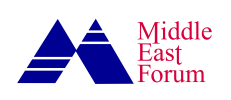Iran is facing multiple crises—an energy shortfall, financial instability, and environmental degradation—but Iran’s own statistics suggest the water crisis has escalated to Iran’s greatest due to the simultaneous depletion of surface and groundwater resources.
For the first time, Lake Urmia, the second-largest saltwater lake in the world, has dried up. Additionally, twelve of the country’s dams have emptied, and the remaining dams are at only 37 percent capacity. This has led to widespread drinking water rationing in all provinces, including Tehran, where the government cuts off household water for three to six hours daily. While household consumption accounts for only 6 to 8 percent of Iran’s total water use, the government struggles to supply even this limited amount. Lack of wastewater treatment means that Iran recycles only 15 percent of wastewater for reuse in industrial and agricultural sectors; in comparison, this figure is about 90 percent in countries like Turkey, the United Arab Emirates, Israel, and Qatar.
Twelve of the country’s dams have emptied, and the remaining dams are at only 37 percent capacity.
With widespread crises in the industrial, services, and commercial sectors, the government is wary of taking any action that could cause upheaval in agriculture, which consumes about 90 percent of the nation’s water—despite contributing only 7 percent to the country’s gross domestic product. Agriculture employs 15 percent of the national workforce, and stricter water regulations could push millions into unemployment. The tremendous water waste continues in the sector as the government lacks the financial resources to transition from traditional flood irrigation to modern irrigation technologies, resulting in the consumption of 90 billion cubic meters of water annually in farming alone.
Recent studies by the Open Data Center of Iran, based on official and international statistics, show that Iran ranks first in the region and fifth globally in terms of groundwater depletion, extracting 57 billion cubic meters of water from underground aquifers annually. To put this into perspective: Although Iran accounts for just 1 percent of the world’s population, it is responsible for 9 percent of global groundwater extraction. Groundwater reserves have fallen so drastically that despite a 50 percent increase in the number of wells, water extraction has declined by over 10 percent in the past two decades.
As a result, half of the country’s aquifers are now in a critical state, and six major cities, including Tehran, are among the top forty-three cities worldwide experiencing the worst rates of land subsidence. Annual land subsidence in parts of Iran exceeds ten centimeters, and in some regions reaches up to thirty-one centimeters per year—far above the global critical threshold of four millimeters.The head of the Risk Department at Iran’s Road, Housing and Urban Development Research Center has stated that Iran leads the world in the number and extent of areas experiencing subsidence over 10 centimeters per year.
Soil erosion in Iran—at 16.5 tons per hectare annually—is seven times the global average.
Excessive dam construction has not only turned fertile lands into deserts, but according to reports from the Parliament’s Research Center, soil erosion in Iran—at 16.5 tons per hectare annually—is seven times the global average. With 7.7 percent of the world’s total soil erosion, Iran ranks among countries with the highest rates of land degradation, costing Iran $10 billion annually.
On August 12, 2025, Israeli Prime Minister Benjamin Netanyahu addressed the Iranian people via a video message. “Iran’s thirst for water is only matched by its thirst for freedom,” he declared, promising, “Once Iran is free, Israel’s top water experts will come to every city in the country with the most advanced technologies and knowledge to help Iran with water recycling and desalination.”
Netanyahu may seek to highlight the Iranian regime’s failures in order to delegitimize it, but he does have a point. Israel, through its use of modern irrigation technologies, wastewater recycling, and precise water pricing, has achieved the highest agricultural efficiency in the region. As their faucets run dry, Iranians would be right to ask whether they suffer more for their leaders’ antagonism toward Israel, especially given the example of so many other countries in Africa and now the Middle East that take advantage of Israeli expertise.







